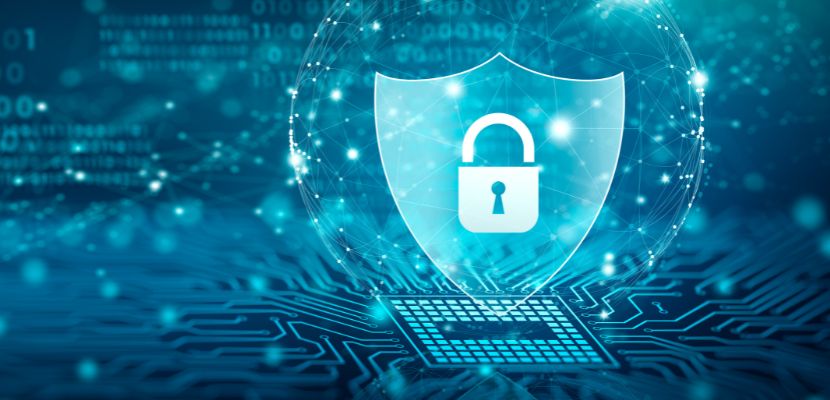Scareware is malicious software designed to deceive users into believing their computer is infected with harmful viruses or malware, prompting them to take unnecessary actions, such as purchasing fake security software or providing personal information.

What Is Scareware?
Scareware is a form of malicious software that manipulates users by instilling fear about their computer's security, often falsely claiming that it is infected with viruses or malware. It typically operates by displaying alarming pop-up messages, fake system scans, or other misleading notifications that make the user believe their device is at risk.
The intent behind scareware is to pressure users into taking specific actions, such as purchasing fake antivirus software, downloading additional harmful programs, or entering sensitive personal information. This type of software uses social engineering to create a sense of urgency and vulnerability, ultimately leading users to make decisions that benefit the attacker, such as financial loss or system compromise.
What Is the Difference Between Scareware and Ransomware?
The primary difference between scareware and ransomware lies in their methods and goals.
Scareware tricks users into believing their computer is infected with malware, prompting them to take actions such as purchasing fake antivirus software or revealing personal information, all based on fear.
In contrast, ransomware actively locks or encrypts a user's files or system, demanding payment, often in cryptocurrency, in exchange for the decryption key or to restore access. While both types of malware rely on exploiting fear and urgency, ransomware directly holds the user's data hostage for financial gain, whereas scareware's goal is to convince users to make unnecessary payments or downloads without necessarily compromising their data.
How Does Scareware Work?
Scareware works by exploiting psychological manipulation to create a sense of urgency and fear in the user. Typically, it begins by infecting a system through malicious websites, email attachments, or bundled software downloads. Once installed, scareware generates fake alerts or warnings that appear to be from legitimate security software, claiming that the user’s device is infected with viruses or malware.
These alerts often include alarming messages, urging the user to take immediate action, such as running a "scan" or purchasing fake antivirus software. The software may also simulate a system scan that appears to detect numerous threats, further convincing the user that their computer is at risk. As the user becomes more anxious, the scareware encourages them to pay for unnecessary or fraudulent software, often leading to financial loss or exposure to additional threats.
Scareware Examples
Some common examples of scareware include:
- Fake antivirus alerts. Pop-ups that appear to be from well-known antivirus programs, such as McAfee or Norton, warning the user that their system is infected and urging them to buy a subscription to fix the problem. These alerts often look official but are actually designed to trick the user into purchasing a fake product.
- System warning alerts. Scareware that simulates a system error or warning message, claiming that critical system files are corrupt or that the computer is being monitored by hackers. The user is then prompted to download a tool or software to fix the issue, which is usually malicious.
- Fake system scans. Software that runs fake system scans to falsely identify numerous security threats or viruses. The user is then convinced to buy a paid version of the software to "fix" the issues, only for them to be non-existent.
- Scareware browser pop-ups. Pop-up ads or alerts that claim the user’s browser is compromised or infected, urging them to call a fake technical support hotline or to download a specific tool to "clean" the browser. These pop-ups may appear while browsing reputable websites.
What Is the Impact of Scareware?

The impact of scareware can be significant, both financially and in terms of security. Financially, users may fall victim to fraudulent purchases, spending money on fake antivirus software or other non-existent services. These payments often provide no real protection and can lead to further financial loss if attackers continue to exploit the user's trust. Scareware can also cause emotional distress, as users may fear for the safety of their data or personal information, which leads to poor decision-making under pressure.
From a security perspective, scareware can introduce additional malware into the system. In some cases, the software the user is tricked into installing can itself be harmful, installing trojans, ransomware, or spyware that compromise the user's privacy and security. Furthermore, scareware can make the system more vulnerable to future attacks by providing a gateway for other malicious software. It can also erode trust in legitimate security solutions, as users may become skeptical about genuine alerts or services after being deceived by scareware.
How to Detect Scareware?
Detecting scareware is crucial to protecting your system from malicious software designed to deceive and exploit you. To detect scareware, follow these steps:
- Examine the source of alerts. Scareware often presents itself as pop-ups or alerts that appear unexpectedly, especially when browsing unknown or suspicious websites. Be cautious of warnings that come from unfamiliar sources, especially those claiming to be from antivirus programs or system administrators, without any legitimate basis.
- Look for excessive urgency. Scareware typically tries to create a sense of urgency, such as claiming that your computer is severely infected and requiring immediate action. If the message seems too urgent or demanding, it's likely a scam.
- Check for fake scans or results. If a program is showing a system scan that identifies an unusually high number of issues (especially if you haven't run a scan yourself), it may be scareware. Genuine antivirus software typically provides more specific details and includes an option to review the detected issues.
- Verify the website or program. Check the legitimacy of any software or website presenting these warnings. Use trusted sources to verify the credibility of the website or the security software being advertised. If you're uncertain, search for reviews or look for official information on the company’s website.
- Do not click on suspicious links or buttons. Scareware often includes fake buttons that prompt you to "Fix Now" or "Call Support." Avoid clicking these buttons, as they are designed to lead to malicious actions or fraudulent payment requests.
- Run a legitimate antivirus scan. If you're unsure whether your system is infected, run a scan with a reputable antivirus program. Many legitimate security tools can detect scareware or other types of malware.
- Check system behavior. If your system begins to act unusually—such as slowing down significantly or displaying random pop-ups—it's worth investigating further. Scareware often affects system performance or interacts with other malicious software.
- Look for unwanted programs or extensions. Go through your installed programs or browser extensions. If you notice unfamiliar or suspicious software that you did not install, it may have been installed alongside scareware.
How to Prevent Scareware?
To prevent scareware, follow these proactive steps:
- Use reputable antivirus software. Install and maintain up-to-date antivirus software from trusted vendors. These programs can detect and block scareware before it infects your system, providing real-time protection against malicious files and activities.
- Keep software and systems updated. Ensure that your operating system, browsers, and all software are regularly updated. Many malware infections exploit security vulnerabilities in outdated software, so keeping everything up to date reduces your risk.
- Enable pop-up blockers. Use a pop-up blocker in your web browser to prevent malicious pop-ups and alerts from appearing. Many scareware attacks are delivered through pop-up ads or deceptive warnings displayed on compromised websites.
- Be cautious with email attachments and links. Avoid opening email attachments or clicking on links from unknown or suspicious sources. Phishing emails and links often deliver scareware or lead to malicious websites designed to trick you into downloading harmful software.
- Avoid visiting suspicious websites. Stay away from untrustworthy or suspicious websites that may host scareware or other malicious content. If you must visit unfamiliar sites, use a browser with built-in security features, like Google Chrome or Mozilla Firefox.
- Use a web browser with security features. Many modern browsers have built-in features to warn you about suspicious websites or block malicious content. Make sure these features are enabled and consider using an ad blocker for additional protection.
- Educate yourself and others. Stay informed about common online scams, including scareware tactics. Being aware of the warning signs can help you avoid falling for fraudulent schemes and protect others in your household or organization.
- Enable two-factor authentication (2FA). If available, enable two-factor authentication on accounts that store sensitive data. This adds an extra layer of protection if your system is compromised by scareware or other types of malware.
- Back up important data regularly. Regularly back up your files to an external drive or cloud storage. In case you do fall victim to a scareware attack, having backups of your important data will minimize the damage and allow you to recover quickly.
How Do I Get Rid of Scareware?
If you suspect your system is infected with scareware, it's crucial to take immediate action to remove it and restore your computer's security. The following steps outline a systematic approach to detecting, eliminating, and preventing further scareware attacks:
- Contact professional help (if needed). If you are unable to remove the scareware yourself or suspect that your system is still compromised, consider reaching out to a professional IT technician or a trusted computer repair service for further assistance.
- Do not engage with the alerts. First, avoid clicking any links or buttons in the scareware alerts, as they may install additional malware or prompt fraudulent actions.
- Disconnect from the internet. Disconnect your computer from the internet to prevent the scareware from downloading additional malicious software or communicating with remote servers.
- Run a full system scan with antivirus software. Use a reputable antivirus program to perform a full system scan. Many legitimate security tools can detect and remove scareware. If the antivirus detects the scareware, follow the prompts to quarantine or delete it.
- Use anti-malware tools. In addition to your regular antivirus, consider using specialized anti-malware tools like Malwarebytes, which are designed to detect and remove various types of malware, including scareware. These tools can identify and eliminate the scareware that might evade your antivirus.
- Check and remove suspicious programs. Go through your installed programs via the Control Panel (Windows) or Applications folder (Mac) and uninstall any suspicious or unwanted programs. Be careful to only remove software you know is not legitimate.
- Delete temporary files. Use the built-in disk cleanup tools on your computer (like Windows’ Disk Cleanup) to remove temporary files and cache, as scareware often hides in these files. This can also help remove residual files left behind by the malware.
- Check browser extensions and settings. If scareware has installed a malicious browser extension or altered your browser settings, go into your browser’s settings and remove any suspicious extensions or reset settings to default.
- Restore our system (if necessary). If the scareware remains even after running antivirus and anti-malware tools, you may need to use System Restore (on Windows) to return your system to a point before the scareware was installed. For Mac, you can use Time Machine to restore to a previous backup.
- Update your passwords. After removing scareware, change your passwords, especially if you were tricked into providing sensitive information. Enable two-factor authentication wherever possible for added security.